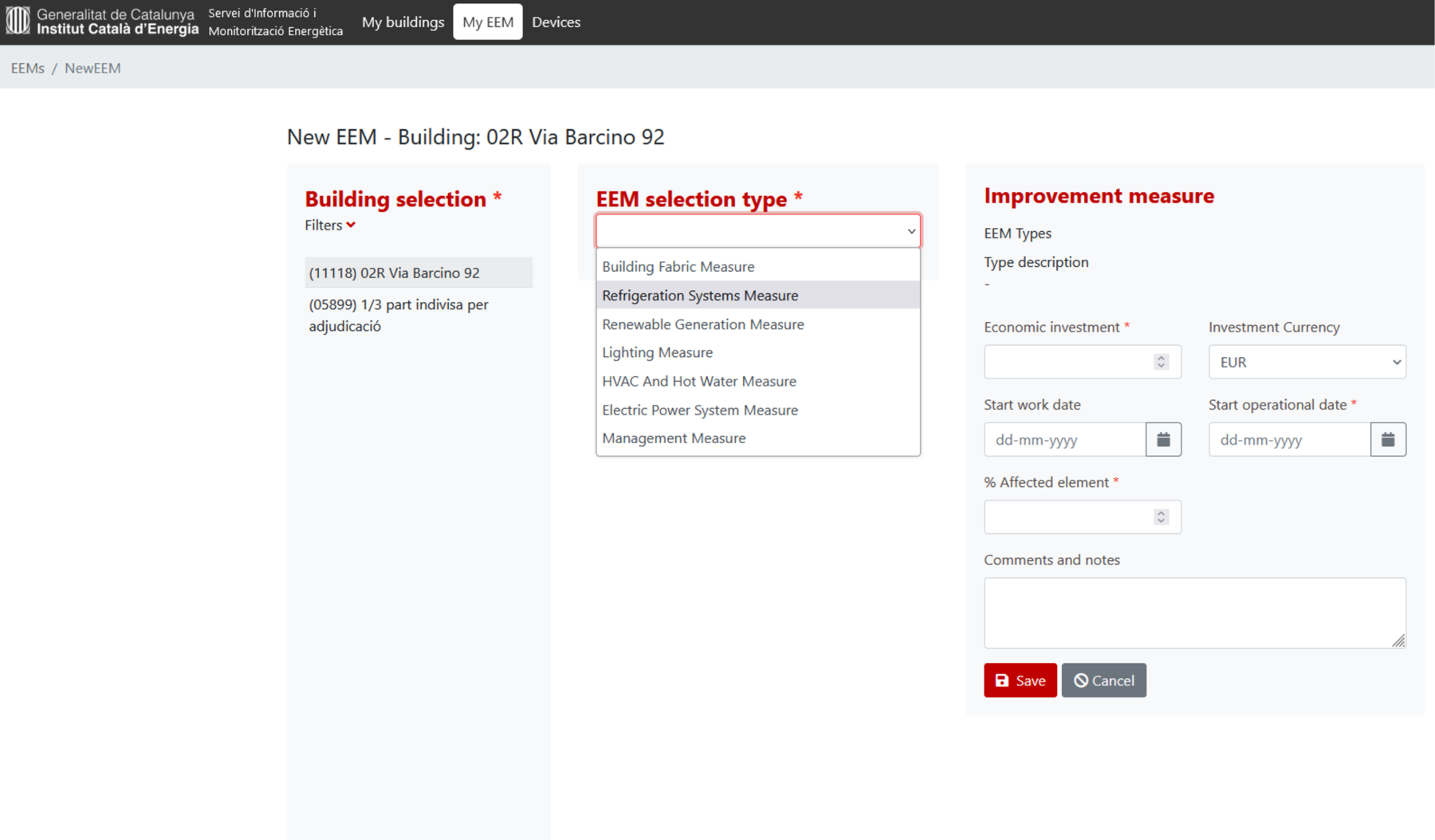The project progress (and the accompanying platform) has already led to major improvements in how the information is gathered, stored and processed. ICAEN is tasked with promoting and tracking the energy savings of the Catalan government buildings, its public entities and dependant companies buildings. BC1 has already facilitated gathering of data that before the project was a doable but highly challenging and time consuming act of handling hundreds of energy managers, encouraging them to gather the EEM data and providing them a method to record this data. The latest and best iteration of the process was a gigantic excel file in which the essential information was requested (investment cost, typology of actions, operation date, etc.).
The main issue of the excel file was that allowed users to fill several columns as they pleased without mandatory columns or data types. This process has a large margin of error since most of the information was open for managers to introduce (only the typology was selected from top-down lists). These files then had to be combined by ICAEN to filter errors, remove writing typos and combine them to get the full picture of the actions implemented by the full Catalan government.


The process required a lot of cleaning up and merging of the data, while losing vast amounts of it due to the process itself being not appealing to energy managers and hard for ICAEN to track which entities have and have not provided the data.
The BIGG project results of BC1 so far consist of a platform to register buildings information, energy efficiency measures (EEM) (implemented to the buildings) which users can browse it all and register new measures. The platform has provided ICAEN with a tool to prompt all energy managers to record their EEM, which are associated to their respective buildings and therefore assigned to the right entities of the Catalan government without any need of cleaning and post-processing of the data by ICAEN, saving hours of work to reach the results. The use of the platform also minimises the data loses since it is an easy system to use that is always active (continuously allowing managers to log data), and ensures a common format of collection by requesting minimal information to be logged to be able to record the new EEM.
The table below shows the results already collected by the platform for the year 2021 (collected between October and December) and the ongoing collection for the year 2022 showing the results aggregated by departments (ministries) of the Catalan government.





